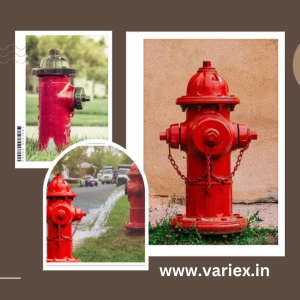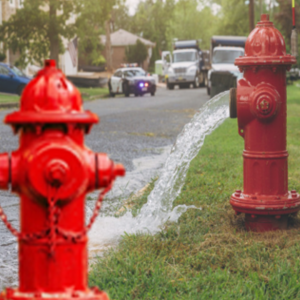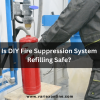![]()
Fire Immuniser
+91-7829629111
Email: info@variex.in
Varistor Technologies Pvt. Ltd.
Block-1, First Floor, Ardente Office One, Hoodi Circle, ITPL Main Road, Bengaluru, Karnataka 560048, IN
How To Operate Fire Hydrant System
Fire hydrant systems are vital components of fire safety infrastructure, providing firefighters with immediate access to water during emergencies. Knowing how to operate these systems efficiently is crucial for effective firefighting. Below is a step-by-step guide on how to operate a fire hydrant system:
 1. Assess the Situation: Before approaching the fire hydrant, assess the fire's size, location, and intensity. Ensure that it's safe for firefighters to operate and that there are no immediate hazards like structural instability or hazardous materials present. Communicate with the incident commander to understand the firefighting strategy and prioritize the deployment of resources effectively.
1. Assess the Situation: Before approaching the fire hydrant, assess the fire's size, location, and intensity. Ensure that it's safe for firefighters to operate and that there are no immediate hazards like structural instability or hazardous materials present. Communicate with the incident commander to understand the firefighting strategy and prioritize the deployment of resources effectively.
2. Gather Necessary Equipment: Ensure that the hydrant wrench is appropriate for the type of hydrant being used. Check the condition of the hose, nozzle, and other equipment to ensure they are free of damage or defects. Carry spare parts or additional tools, such as hose adapters or fittings, to address any unforeseen issues during operation.
3. Remove Obstructions: Clear a perimeter around the fire hydrant to provide easy access for firefighters and prevent any hindrance during operation. Use shovels or other tools to remove snow, ice, or debris covering the hydrant. If vehicles are blocking access, coordinate with law enforcement or property owners to have them moved promptly.
4. Open the Hydrant: Apply the hydrant wrench to the hydrant's operating nut and turn it counterclockwise to loosen and remove the cap. Be mindful of any residual pressure within the hydrant and stand clear to avoid injury from sudden release of water or debris. Inspect the hydrant threads and connections for any signs of damage or corrosion before attaching the hose.
5. Attach the Hose: Ensure that the hose coupling threads match those of the hydrant outlet to prevent leaks or improper connections. Use a two-person technique if necessary to secure the hose to the hydrant effectively. Double-check the coupling gaskets and connections to ensure they are tight and properly seated.
6. Control Water Flow: Open the hydrant valve slowly to gradually introduce water into the hose and avoid sudden pressure surges. Monitor the pressure gauge to ensure that the water flow rate remains within acceptable limits. Use the hydrant valve's operating stem to adjust the flow rate as needed, balancing water conservation with firefighting effectiveness.
7. Direct Water Stream: Position the firefighter operating the hose in a safe and effective location to direct the water stream onto the base of the fire. Adjust the nozzle pattern to create a solid stream, fog pattern, or combination depending on the fire's characteristics and the desired firefighting strategy. Maintain situational awareness to anticipate changes in fire behavior and adjust tactics accordingly.
8. Monitor Water Supply: Assign a firefighter to monitor the water supply and pressure gauge to ensure a steady flow of water to the hose. Communicate any fluctuations or concerns to the incident commander and adjust the hydrant valve as necessary to maintain consistent water flow. Monitor water levels in tanks or reservoirs to prevent depletion and ensure an adequate water supply for firefighting operations.
9. Coordinate with Firefighters: Maintain clear communication with other firefighters and emergency responders to coordinate firefighting efforts effectively. Relay information about the fire's status, water availability, and any hazards or challenges encountered during operation. Work collaboratively to implement the incident commander's strategy and prioritize actions to achieve fire control and extinguishment objectives.
10. Close the Hydrant: Once the fire is under control and extinguished, close the hydrant valve by turning it clockwise until fully tightened. Use the hydrant wrench to secure the operating nut and replace the hydrant cap securely to protect the outlet from damage and debris. Conduct a final inspection of the hydrant and surrounding area to ensure all equipment is properly stowed and any hazards are addressed before concluding operations.
Frequently Asked Questions
A fire hydrant system is a network of pipes, valves, and hydrants designed to provide a readily available water supply for firefighters to extinguish fires in urban and suburban areas.
Fire hydrant systems are connected to a municipal water supply or other large water sources. During a fire emergency, firefighters connect hoses to the hydrants, open the valves, and direct pressurized water onto the flames to extinguish or contain the fire.
Fire hydrants are strategically placed along streets, sidewalks, or other accessible locations in urban and suburban areas to ensure comprehensive coverage and quick access for firefighters during emergencies.
Municipal authorities or utility companies are responsible for the installation, maintenance, and repair of fire hydrant systems to ensure their proper functioning.
Fire hydrants are typically inspected and tested regularly, usually annually, to ensure they are in working condition. Additionally, visual inspections may be conducted more frequently to check for any signs of damage or obstruction.
Final Say
We at VariEx.in or Variexonline.com have mastered the art of designing, installing, inspecting, and fixing automatic sprinkler systems with the help of our in-house team, which is capable of delivering the fire sprinkler services you need, whether large or small and at affordable cost.
To schedule a fire sprinkler installation, or you think our services could benefit your commercial property, contact us online or give us a call at, 7829629111









